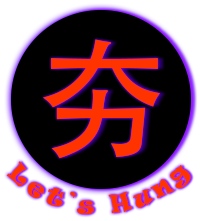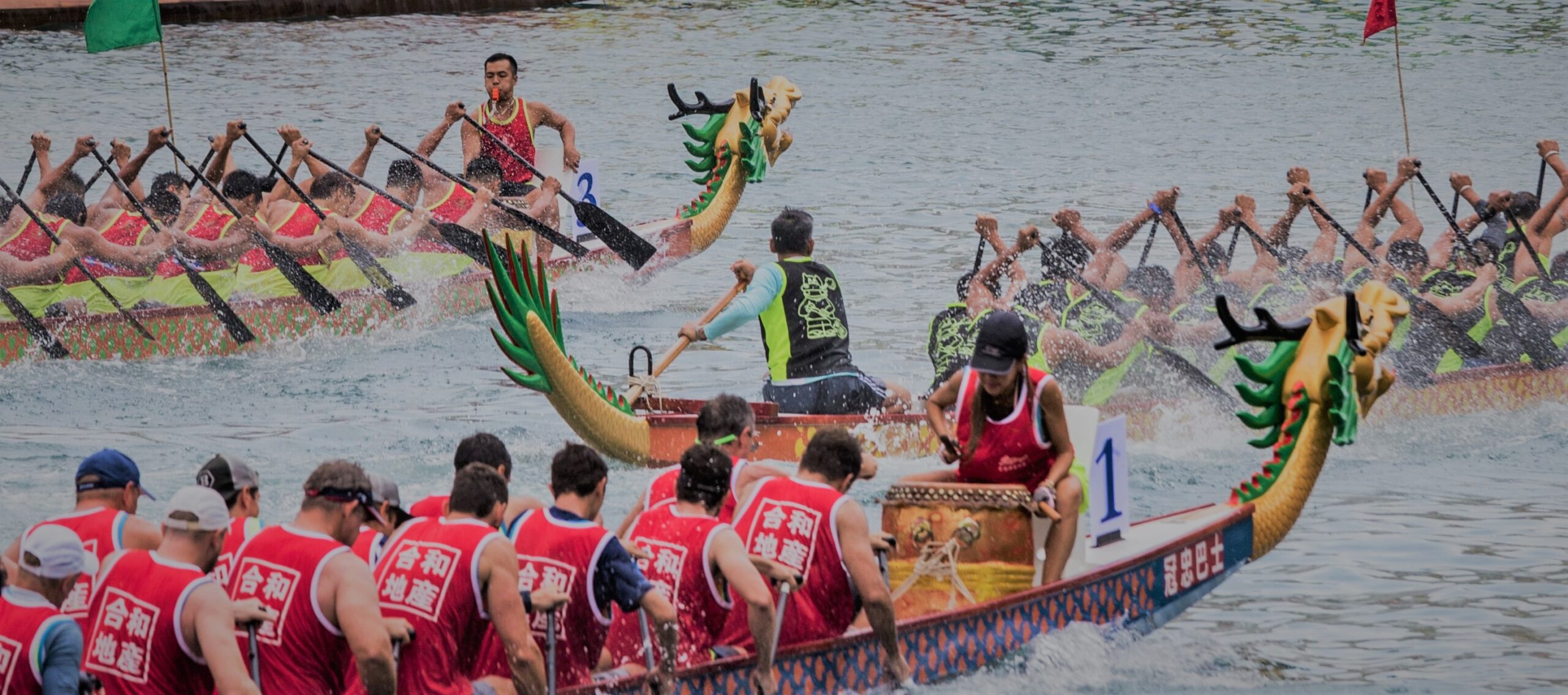Double Fifth Festival , Dragon Boat Festival and Duan Wu Jie – what’s the correlation?
Dragon Boat Festival is celebrated on the fifth day of the fifth month of the Chinese lunar calendar, hence it is also called “Double Fifth Festival”. This year, it falls on a Friday, 3 June 2022. Duan Wu Jie[端午節] the Chinese name of Dragon Boat festival- it simply means “the fifth Solar month” from the Chinese wording. It is also known as the festival for health and epidemic awareness celebrated since ancient times. The people believed that it could oust evil spirits, any epidemics spread and unwanted pests by hanging the sharp looking calamus leaves and mugwort outside the door and bring health to the family.
Dragon Boat Festival is one of the significant traditional Chinese festivals, along with the Spring Festival, Tomb-Sweeping Day, and Mid-Autumn Festival. Some of the countries will named it as “Rice Dumpling Festival” especially in Southeast Asia region. Simply because, we will typically eat “zongzi”- 粽子 during this period, the representative food of this Festival. There are a few sayings on the origins or myth of rice dumplings. In commemoration of Qu Yuan, these dumplings are said to have thrown into river to protect Quyuan’s drowned body from eaten up by the fishes. There’s another saying that these are offerings to worship the Dragon god and dragon boat racing activities are also held on this day. That explains why it is known as “Dragon Boat Festival”.
Enough about the facts and origins, let us explore more about the festival food- Zongzi [Rice Dumpling] in both Taiwan and Singapore. It is interesting that rice dumpling comes with many flavours and it varies across different countries.
Flavours of Rice Dumplings in Taiwan
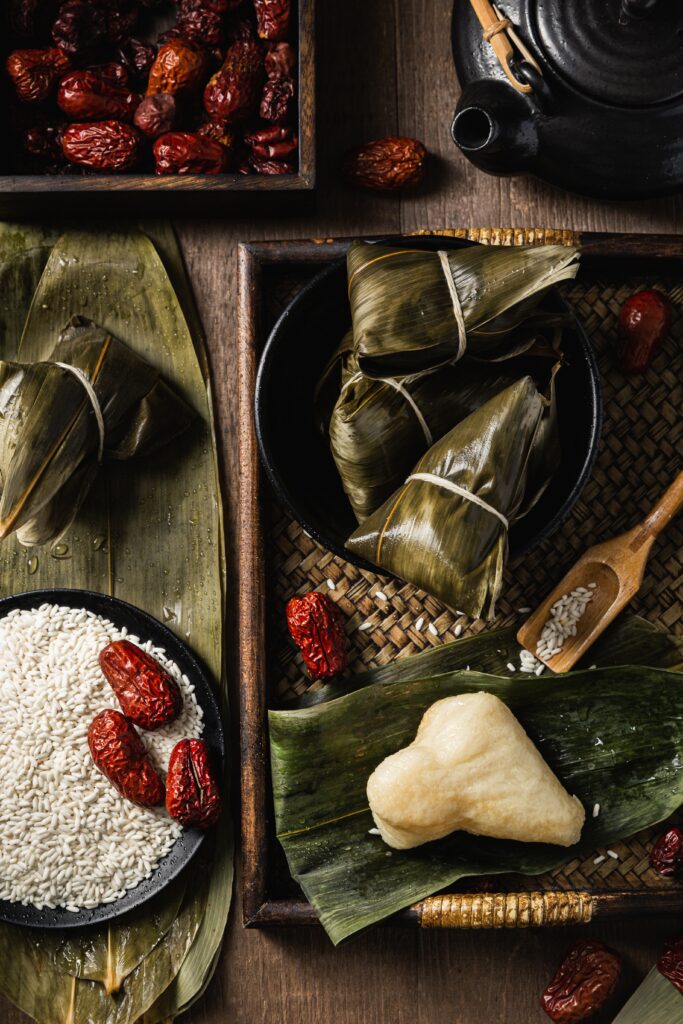
Photo Credit: Mae Mu from Unsplash
- Northern Rice Dumpling
It is filled with pork, dried beans, bamboo shoots, brine eggs, shiitake mushrooms, dried shrimp, dried radish, etc., and finally wrapped with dried bamboo leaves.
- Southern Rice Dumpling
The taste is much lighter than northern dumplings with fillings of larger pieces of pork, shallots, chestnuts, dried beans, taro, peanuts, mung beans, and glutinous rice and then put into boiling water to cook, it is best consumed with sauce to bring out the taste.
- Hakka Rice Dumpling
Steamed glutinous rice wrapped in fried shrimp, shallots, shiitake mushrooms, preserved vegetables and other hakka cuisine ingredients used. The taste can be oily but not as oleaginous, and the fragrance can stay in your mouth for some time.
- Hakka Rice Dumpling – rice noodles
Inner filling of Hakka rice dumplings usually uses rice noodles, shiitake mushrooms, dried shrimp, ground meat, dried radish, dried beans, and a special mix of glutinous rice that ground into rice paste and drained, using glutinous rice paste to wrap the inner filling, and wrap in bamboo leaves and tie it into rice dumplings, then place them in a steamer. It gives you a chewy and succulent taste.
- Alkali rice dumpling
It is also commonly known as stem dumpling and it is generally sweet, which you can also buy it in Malaysia and Singapore as well. It is commonly consumed with dipping in sugar, honey, fruit jam or even kaya sauce [only in Singapore/Malaysia] as there’s no filling in it.
- Wild Ginger Flower Dumpling
This is a specialty in Hsinchu city. Generally take the stem of wild ginger flowers to dry and grind into a powder, to add with pepper and shiitake mushrooms, black pork, glutinous rice and steam it together, then wrap the dumplings with wild ginger flowers and bamboo leaves and steam again. In Hsinchu area, it also has wine infused beauty dumplings made of red koji, traditional Hakka plum dried vegetables, high-calcium rice, and Neiwan wild ginger flowers, which are not only delicious but also keeping you healthy.
- Millet Rice Dumpling
This type of dumpling typically use pork, snails or pumpkin as the fillings and wrapped in millet or taro flour with the fake sour pulp leaves as the first layer followed by long peach leaves as the most outer layer and boiled it. It is common with the Taiwan aborigines with various ethnic groups.
Rice dumpling in Singapore
Honestly, we do not have as many selections like in Taiwan. In Singapore, it is generally the standard Nonya Rice Dumpling or the meat Rice Dumpling for sale.
You can simply get it at supermarkets these days and conveniently steam it before consumption. Alternatively, you can go for more affordable brands like Kim Choo Kueh Chang – the representative brand of Nyonya Rice Dumpling, Mr Bean or Hiong Kee Dumplings. Otherwise, if you feel rich and you are the sort who are daring to try interesting new flavours, you can pop by at some popular Chinese restaurants such as Hai Tien Lou , Crystal Jade or even prestigious hotels like raffles hotel and RWS for nice bundle package of the dumplings.
They also introduce more creative flavours like Hokkaido Sweet Potato ‘Lava’ Rice Dumpling- [Peach Blossom] , Traditional Jumbo Rice Dumpling with Abalone ; Taiwanese Dumpling with Sesame Oil Chicken – [Hai Tien Lou], Abalone & Jinhua Ham Glutinous Rice Dumpling-[yì by Jereme Leung], Petite Peach Gum with Yuzu Peel Crystal Jelly Dumpling-New [Crystal Jade], Red Bean Rice Dumpling – airflown from Taiwan and specially made with pearl glutinous rice with mashed red bean fillings [ DinTaiFung].

Photo Credit: Raffles Hotel Singapore
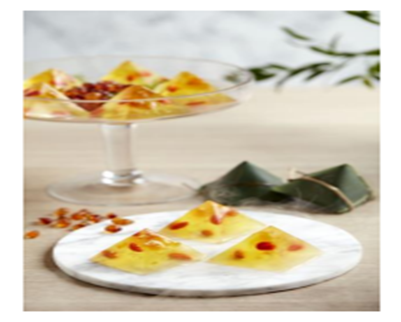
Photo Credit: Petite Peach Gum with Yuzu Peel Crystal Jelly Dumpling-New, Crystal Jade
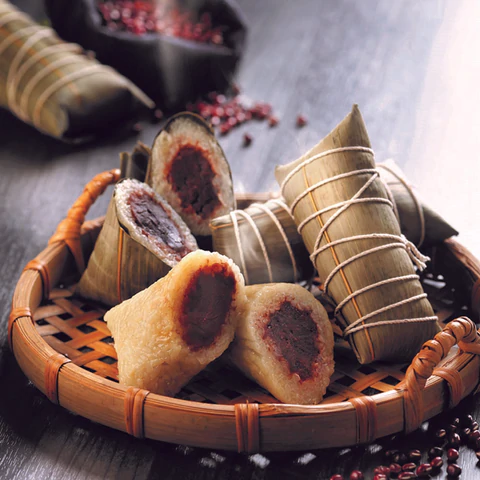
Photo Credit: Red Bean Rice Dumpling, Din Tai Fung

Photo Credit: Peach Blossom , Park Royal Collection, Marina Bay
So guys, don’t wait on and do look out for your fave flavours and grab them all now. Let’s Hung!
